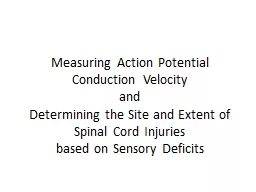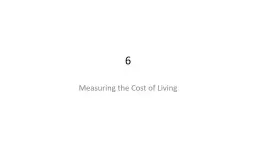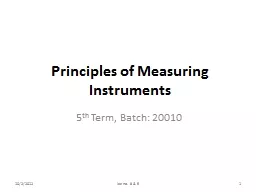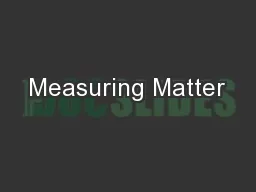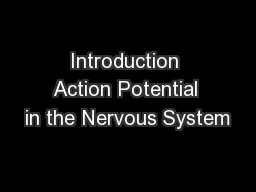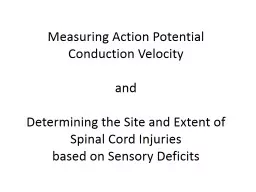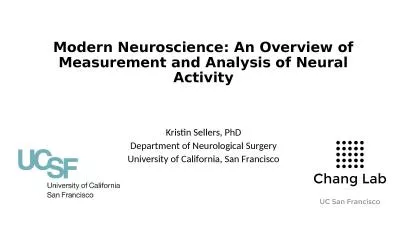PPT-Measuring Action Potential
Author : olivia-moreira | Published Date : 2018-11-09
Conduction Velocity and Determining the Site and Extent of Spinal Cord Injuries based on Sensory Deficits The proximity of the Ulnar nerve near the surface at elbow
Presentation Embed Code
Download Presentation
Download Presentation The PPT/PDF document "Measuring Action Potential" is the property of its rightful owner. Permission is granted to download and print the materials on this website for personal, non-commercial use only, and to display it on your personal computer provided you do not modify the materials and that you retain all copyright notices contained in the materials. By downloading content from our website, you accept the terms of this agreement.
Measuring Action Potential: Transcript
Download Rules Of Document
"Measuring Action Potential"The content belongs to its owner. You may download and print it for personal use, without modification, and keep all copyright notices. By downloading, you agree to these terms.
Related Documents

